It's all about the classical music composers and their works from the last 400 years and much more about music. Hier erfahren Sie alles über die klassischen Komponisten und ihre Meisterwerke der letzten vierhundert Jahre und vieles mehr über Klassische Musik.
Total Pageviews
Friday, April 7, 2023
Top 30 Most Underrated Classical Composers
Most Fun Classical Songs and Popular Tunes for Easter
By Hermione Lai, Interlude
 Pandemics come and pandemics go, but Easter will surely return every year. For many Christians around the world this is the most important holiday of the year. It commemorates the Passion of Christ, starting with the Last Supper and culminating with the crucifixion and death of Jesus. But above all, it celebrates the resurrection of Jesus Christ. The time around Easter, in many cultures and in different parts of the world is connected with a sense of renewal. Hurrah, Spring is finally coming!
Pandemics come and pandemics go, but Easter will surely return every year. For many Christians around the world this is the most important holiday of the year. It commemorates the Passion of Christ, starting with the Last Supper and culminating with the crucifixion and death of Jesus. But above all, it celebrates the resurrection of Jesus Christ. The time around Easter, in many cultures and in different parts of the world is connected with a sense of renewal. Hurrah, Spring is finally coming!
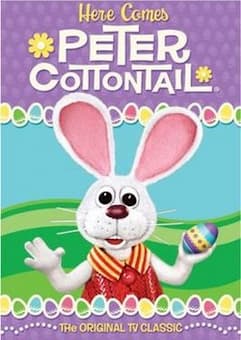
Here Comes Peter Cottontail
“Here comes Peter Cottontail”
Easter is not just a religious or nature ritual, but it is also connected with some very fun traditions for children and for those young at heart. And Easter wouldn’t be Easter without some beautiful, popular, uplifting and joyful music. So here comes my personal playlist of the most fun classical songs and popular tunes for Easter. Let’s get started with the long-eared and short-tailed creature who delivers decorated eggs to well-behaved children on Easter Sunday. Yes, I am talking about the Easter Bunny. You won’t find him mentioned in the bible, but Peter Cottontail is definitely a hugely popular Easter tradition.
Duke Ellington: Cotton Tail (Dee Dee Bridgewater)
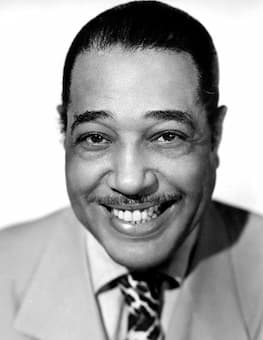
Duke Ellington
The young Easter Bunny Peter Cottontail lives in April Valley together with his fellow Easter Bunnies. They make Easter candies, sew bonnets, and they decorate and deliver Easter eggs. But trouble starts brewing when Peter Cottontail, who is somewhat unreliable and gossipy, is supposed to be appointed Chief Easter Bunny. An evil rabbit named January Q. Irontail also wants the job, but his motivation is a little different. He wants to ruin Easter for children as revenge for a child roller-skating over his tail. Now he has to wear an artificial tail, and he is not a happy bunny. After much intrigue, scheming, and treachery, Irontail does become the new Chief Easter Bunny. He quickly passes various laws to make Easter a disaster. Eggs have to be painted brown and gray, candy sculptors become tarantulas and octopuses, and instead of Easter bonnets, he orders that Easter rubber boots be made. Of course, things do work out in the end, and Cottontail, all reformed and reliable becomes the official Chief Easter Bunny.
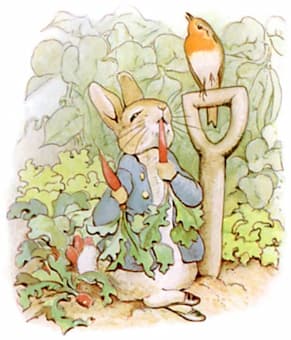
Peter Rabbit
The animated television special of Peter Cottontail dates from 1971, but the character of Peter Rabbit has a long tradition in children’s literature. Beatrix Potter first introduced Peter Rabbit in 1902. It became a huge hit, and she wrote five more books on the subject. “Cottontail” also became the inspiration for the great American composer, pianist and jazz orchestra leader Duke Ellington. When he returned to the US after a successful tour of Europe in 1940, he composed the jazz standard “Cotton Tail.” For jazz aficionados the tune “foreshadows bebop in the rhythmic inflections and melody line.” Jon Hendrick wrote the lyrics accompanying the tune based on the familiar Peter Rabbit fairytale. Personally, I really love the scat tribute to Ella Fitzgerald performed by Dee Dee Bridgewater, as her voice skips and hops across the musical landscape.
Philip Henrik Johnsen: Church Music-Easter Sunday 1757 “Allegro”
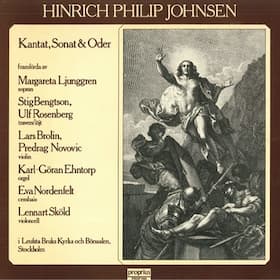
Hinrich Philip Johnsen
Our next Easter selection takes us to a completely different time and place. The time is the mid-18th century, and the place is Stockholm in Sweden. There had been a bit of trouble deciding on the royal succession, and in the end Adolf Fredrik, Duke of Holstein-Gottorp was elected to the throne of Sweden. The Duke had to pick up his entire household for his move to Stockholm, and he brought his own musicians along. That included a young clavier player named Hinrich Philip Johnsen (1717-1779). He probably hailed from Germany, and he was regarded as a prominent contrapuntist and organ improviser. He composed some delightful and cheerful music for the Easter Sunday service in 1757. The reason we know that it was composed in 1757 is because the composer put the date in the title. The music is very cheerful indeed, and even though the composer is not a household name, it’s a really fun Classical Song for Easter.
Nikolay Rimsky-Korsakov: Russian Easter Festival, Op. 36
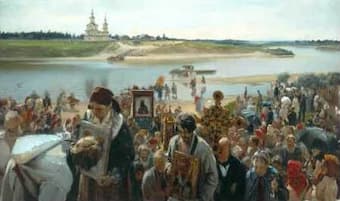
Russian Easter Festival
Everybody has his or her favorite Easter traditions and memories. The Russian composer Nikolay Rimsky-Korsakov remembers the celebration of Easter “as a large gathering of people from every walk of life, with several popes conducting cathedral service… the old liturgical chants and nearby monastery bells ringing out.” In 1887/88 he decided to musically encode his childhood memories, growing up in Tikhvin, in Novgorod province. The orchestra was Rimsky-Korsakov’s instrument, and he composed a brilliant and wonderful score. As he wrote, “I want to reproduce the legendary and heathen aspect of the holiday, and the transition from the solemnity and mystery of the evening of Passion Saturday to the unbridled pagan-religious celebrations of Easter Sunday morning.” You can hear all the excitement of the crowds in that beautiful and fun Classical Song for Easter.

Vally Weigl, wife of Karl Weigl © Weigl Foundation
Karl Weigl: 6 Children Songs, No. 4 “To the Easter Bunny”
Karl Weigl was born in Vienna in February 1881. He showed some exceptional musical talent and his parents sent him for private lessons with Alexander Zemlinsky. From his very beginnings as a composer, it became clear that he had a passion for vocal music. His settings of “Six Children’s Songs” to poems by his second wife Vally date from between 1932-1944. They are written in English because Weigl and his family had to flee to the United States when Hitler annexed Austria in 1938. Weigl had a gift for melodic invention, “as well as simple onomatopoeic devices such as the hopping appoggiaturas in his “To the Easter Bunny.” It’s all about the Easter Bunny delivering his brightly-colored Easter eggs. What a fun and hopping Classical song for Easter.
Irving Berlin: Easter Parade
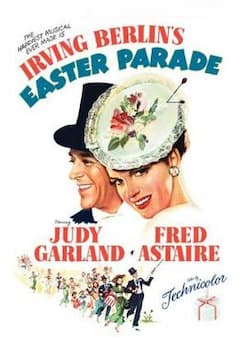
Easter Parade
Easter Parades are said to date back to the early days of Christianity. But they really got going in New York City in the mid-1800s. It was an entirely social event. After the upper crust of society attended Easter services at various churches alongside Fifth Avenue, they strolled outside to show off their new spring outfits and hats. They soon attracted ordinary onlookers wanting to see what the rich and famous were up to, and the tradition of the Easter parade was born. It was highly popular during the mid-20th century, and it even inspired the very popular film “Easter Parade” in 1948. Starring Fred Astaire and Judy Garland, the music was composed by Irving Berlin. Plenty of popular tunes for Easter in that hit production.
Irving Berlin: Easter Parade (MGM Studio Orchestra; Johnny Green, cond.; Roger Edens, piano; Betty Rome, vocals; Blanche Arnaud, vocals; Camilla Holliday, vocals; Fred Astaire, vocals; Gene Curtsinger, vocals; Loolie Jane Norman, soprano; Misses Doxie, vocals; Mel-Tones, vocals; Judy Garland, vocals; Peter Lawford, vocals; Ann Miller, vocals; Dick Beavers, vocals; Clinton Sundberg, vocals; The Lyttle Sisters, choir; Eadie Griffith, piano; Rack Goodwin, piano; MGM Studio Chorus, choir)
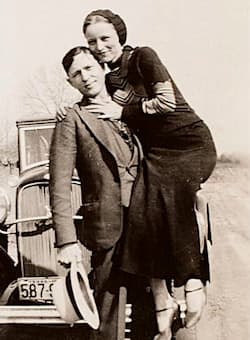
Bonnie and Clyde
Thomas Newman: The Highwaymen, “Easter Morning”
Talking about films, in 2019 Kevin Costner and Woody Harrelson starred in the period crime drama “The Highwaymen”. Essentially, it’s the famed story of the notorious outlaws Bonnie and Clyde, and includes a haunting track detailing some sad events on “Easter Morning.”
Andrew Lloyd Webber: Jesus Christ Superstar, “I don’t know how to love him”
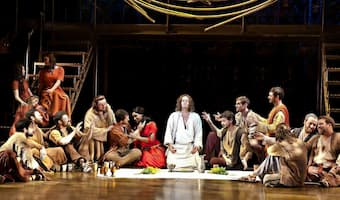
Jesus Christ Superstar © Pamela Raith
Andrew Lloyd Webber is called “the most commercially successful composer in history.” Several of his musicals have run for more than a decade in the West End and on Broadway, and surely you know such hit songs as “The Music of the Night” from The Phantom of the Opera, “Don’t Cry for Me Argentina” from Evita, and “Memory” from Cats. One of his earlier and rather controversial projects was the 1970 rock opera “Jesus Christ Superstar.” The story is loosely based on the accounts of the last week of Jesus’ life, and it focuses on the personal psychology of the characters. Audiences were rather shocked by the controversial portrayals of Mary Magdalene, and her unrequited love for Jesus. “I Don’t Know How to Love Him” presents her personal confusion in understanding her attraction to Jesus. This gorgeous tune became hugely popular, and it stormed the pop hit charts.
Sergei Rachmaninoff: “Fantaisie tableaux,” Suite No. 1, Op. 5, No. 4 “Pâques (Easter)”
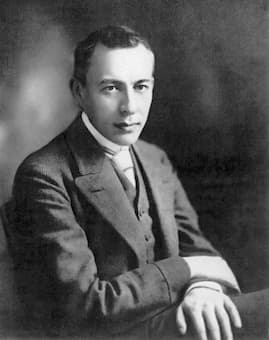
Rachmaninoff, 1901
As a boy, Sergei Rachmaninoff was frequently taking to Russian Orthodox Church services by his grandmother. He was absolutely enchanted by the rituals, and the sounds of church bells and liturgical chants never left him. His Suite No. 1 for two pianos dates from the summer of 1893, and as he explained, “it consists of a series of musical pictures.” Maybe, these musical pictures are based on poetic excerpts, and the work is dedicated to Tchaikovsky. The final tone picture is called Pâques (Easter), and it takes us back to Rachmaninoff’s childhood and the beautiful ringing of bells. For me personally, it is one of the most fun Classical songs for Easter. Easter celebrations and traditions vary widely across the world. No matter how you celebrate Easter or the coming of Spring, there is plenty of fantastic music for that special occasion. What are some of your musical Easter favourites?
Thursday, April 6, 2023
Frederic Chopin - Romance
Why Listen to Rachmaninoff?
Wednesday, April 5, 2023
Tuesday, April 4, 2023
Monday, April 3, 2023
Johann Nepomuk Hummel - Piano Concerto No. 2 in A minor, Op. 85 (1816)
Legendary Cuban songwriter, composer and pianist gained world fame
Cuban-born, Ernesto Lecuona is the dominant musical force to have come out of the island nation, and without question one of the major contributors to the emergence of Latin music as a power in the world marketplace. Often called 'the Gershwin of Cuba,' he was friendly with George Gershwin and with the composer Maurice Ravel, who once called Lecuona's immortal "Malaguena," "more melodic and beautiful than my own "Bolero." Lecuona was friendly with many of the most influential composers and musical personalities of his moment in time, and his style and use of forms have influenced all Latin music, even the salsa of today.
Ernesto Lecuona was born in Guanabacoa, Cuba, across the bay from Havana, on August 6, 1895, but for an unexplained reason he actually observed his birthday as August 7, 1896. His musical talent was already discernible at age three. Following initial piano studies with his sister, Ernestina, he continued at the Conservatorio Peyrellade with Antonio Saaverda and the famed Joaquin Nin. At 17 he graduated from the National Conservatory of Havana with a gold medal in performance.
He had become a prodigious pianist indeed and his talents were soon on view for the first time outside Cuba when he appeared at Aeolian Hall, New York City in 1916. While his ties to his native Cuba were always strong, this initial performance in New York paved the way for an increasing presence in the United States, both as concert pianist and as composer, which eventually led to his permanent move to Florida in 1960, following the rise to power of the Communist leader, Fidel Castro in 1959.
Lecuona produced a veritable torrent of music during his 70 years, including a number of major pop songs, such as the well-remembered, "Malaguena" the bright and rhythmic, "Siboney," with which one can almost hear the clicking accompaniment of castanets "Always in My Heart" and "Andalucia," better remembered for its Americanized version, “The Breeze and I," which became in the late '30s a popular recording hit by the Jimmy Dorsey Orchestra.
While we honor the late Ernesto Lecuona for his wonderful collection of memorable and tuneful songs, his talents in music-making were literally all over the map. In addition to more than 400 songs, he also created 176 piano pieces, 53 theater works (zarzuelas, operettas, theatrical revues and an opera), 31 orchestral scores, 6 pieces for piano and orchestra, 3 violin works, a trio, 5 ballets, 11 film scores and many incidental arrangements.
Lecuona's work stretched considerably beyond the printed score sheet. He was the co-founder of the Havana Symphony Orchestra, the Lecuona Cuban Boys Band and La Orquesta de la Habana. During the '30s and '40s, he was hired to create a number of motion picture scores for MGM, Warner Bros. and 20th Century Fox, and his score for the 1942 Warner Bros. film Always in My Heart was nominated for an Academy Award. At one time he also served as honorary cultural attaché to the Cuban embassy in Washington. He also gave successful performances in Carnegie Hall.
Lecuona, who had moved permanently to Tampa, Florida in 1960, died three years later of a heart attack while on a trip to Santa Cruz de Tenerife in the Canary Islands. He is buried in the Gate of Heaven Cemetery in Hawthorne, NY.
NEVER LET ME GO (2010) - Rachel Portman - Soundtrack Score Suite
Sunday, April 2, 2023
Ralph Vaughan Williams - Fantasia on a Theme by Thomas Tallis
Japanischer Musiker und Komponist Ryuichi Sakamoto gestorben
Der Komponist und Mitglied der Berlinale-Jury, Ryuichi Sakamoto, starb am 28.03.2023
Für seine Musik zum Film „Der Letzte Kaiser“ (1987) wurde er mit einem Oscar und einem Grammy ausgezeichnet. Jetzt ist der japanische Filmkomponist, Musiker, Schauspieler und Produzent Ryuichi Sakamoto tot. Er starb bereits am vergangenen Dienstag im Alter von 71 Jahren.
Der japanische Komponist und Oscar-Gewinner Ryuichi Sakamoto ist im Alter von 71 Jahren gestorben. Sakamoto sei bereits am 28. März einem Krebsleiden erlegen, teilte sein Management am Sonntag mit. Der Musiker war für seine Musik zum Film „Der Letzte Kaiser“ (1987) mit einem Oscar und einem Grammy ausgezeichnet worden.
Der Musiker galt als Pionier elektronischer Musik und Wegbereiter für Musikrichtungen wie Synth-Pop, House-Musik und Hiphop. Bekannt wurde er allerdings für seine Filmmusik, unter anderem auch für den Film „Furyo – Merry Christmas, Mr. Lawrence“ (1983). In dem Kriegsdrama trat er neben seinem Freund David Bowie auch als Schauspieler auf. Das Lied „Forbidden Colours“ wurde zu einem internationalen Hit.
Sakamoto lebte jahrzehntelang in New York. In seiner Heimat Japan war er ein großer Star, war in der Anti-Atombewegung aktiv und gründete 2011 einen Hilfsfonds, um bei der Tsunami-Katastrophe zerstörte Schul-Klaviere zu ersetzen. 2014 überstand er eine Lungenkrebserkrankung. 2015 komponierte er die Filmmusik für „The Revenant – Der Rückkehrer“. 2018 saß Sakamoto in der Jury der Berlinale.
Anfang 2021 erklärte der Musiker dann, er befinde sich wegen Darmkrebs in Behandlung. Sein Management veröffentlichte mit der Todesnachricht am Sonntag eines von Sakamotos Lieblingszitaten: „Die Kunst ist lang, das Leben ist kurz.“
AFP/wolf
Friday, March 31, 2023
Musical Prayers for Peace
By Georg Predota

© National Today
In such times of deep political and ideological crisis, it is once again the musical community calling for an end to hostilities and musically praying for peace. And at the head of the class stands once more the celebrated cellist Yo-Yo Ma, appointed by the United Nations a “Messenger for Peace.” Yo-Yo Ma has been reaching out to people all over the globe, inspiring them to address the many challenging social issues we face today. In a recent concert with the New York Philharmonic, he performed a work that Pablo Casals often played to protest war and oppression.
Pablo Casals (1876-1973) was one of the greatest cellists of the twentieth century. He had to flee his native Spain in 1939 when dictator Francisco Franco took control at the end of the Spanish Civil War. Together with thousands of other refugees, Casals was housed in a refugee camp in France. “Casals spent much of his time delivering food and clothing to fellow refugees, and he continued to aid them throughout his life.”
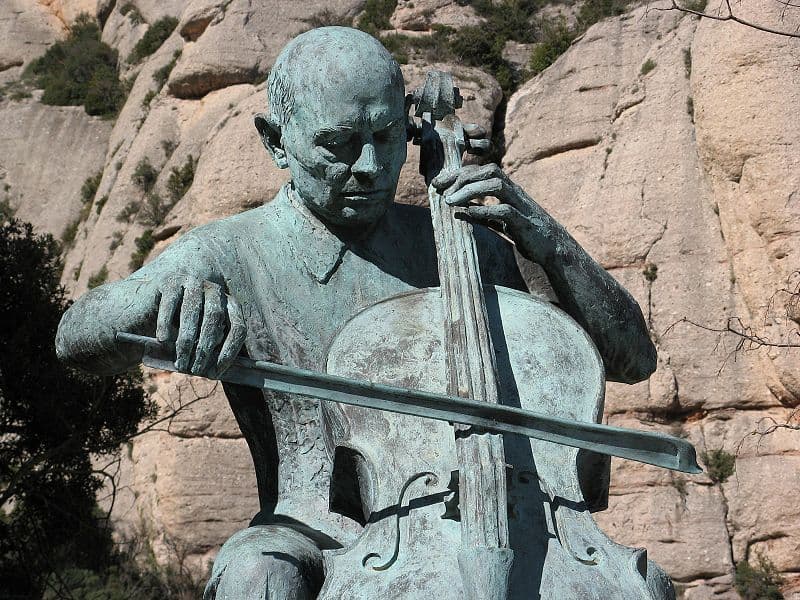
Pablo Casals’ centenary statue
Yo-Yo Ma, at the age of sixteen, played in an orchestra under Casals’ direction. He recalls, “I never forget the way his mind and body would radiate vitality the moment he raised his baton… He saw himself not primarily as a cellist but as a musician, and even more as a member of the human race.” His personal anthem, “The Song of the Birds,” is a traditional Catalan Christmas song and lullaby, and after his exile in 1939, Casals would begin each of his concerts by playing his arrangement for cello.
It might come as a surprise, but the patriotic hymn “Prayer for Ukraine” dates back to 1885, and to a time when Ukrainian culture and language were once again suppressed by the government of Imperial Russia. It has been a very long struggle for independence for Ukraine, as different conquerors have mercilessly fought over this land rich in natural resources and culture. There was a short-lived revolution in 1919 brutally suppressed, and the Soviet occupation inflicted one tragedy after another.
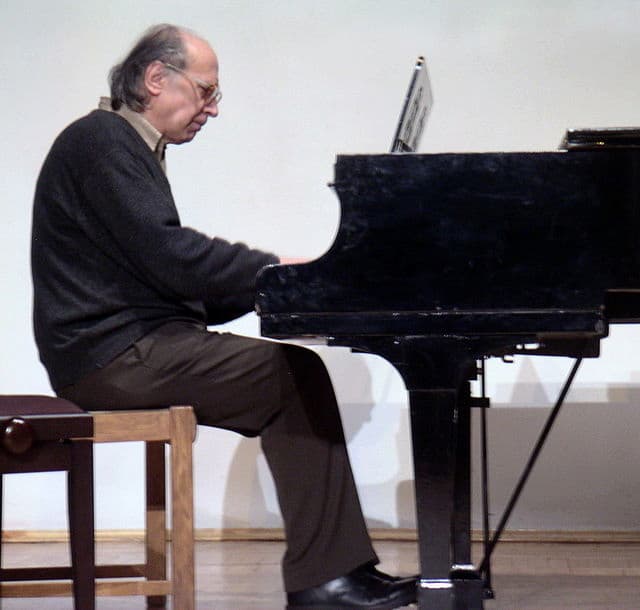
Valentin Silvestrov
During the famine of the 1930s, millions of Ukrainian peasants starved to death because of the criminal policies of Joseph Stalin. The Nazi occupation of Western Ukraine saw the implementation of the “Final Solution,” first applied in cities whose wealth and cultural standing depended entirely on a vast Jewish population. And then there has been this perpetual tug of war over the Crimean Peninsula. Ethnic cleansing at the command of various Russian heads of State was repeated under Stalin, and then once again in 2014 after the Russian occupation. Instead of painting himself as a victim of Western aggression, Vladimir Putin and his shadow puppets should rightfully stand trial for committed war crimes at the International Criminal Court in The Hague.
On 23 February, Anatolii Vasylkovskii took the Ukrainian national chamber ensemble known as the Kyiv Soloists on a regular two-week tour to Italy. One day later, Russian troops invaded Ukraine, and he remembers, “When we arrived in Italy, many of our members phoned their families and heard that there had been bombings.” The focus of the tour changed in an instant, as “we had to spread the message that Ukrainians are peaceful people.” Relying on the solidarity of other ensembles and orchestras, who hosted them in their concert halls and homes, the tour was extended across Europe. Anatolii emphasized, “We want to dedicate these concerts to our families, our country, our army, which are now fighting for the democracy of the whole world.” The Kyiv Soloists want to convey a “message of peace and solidarity with the people of Ukraine and of love for the families and friends they have left behind.” Their performances are no longer simply aimed at cultural exchange and musical enjoyment; they are a form of activism. “Our music-making is now a prayer for peace.”
If I may be permitted, let me add my personal musical prayer for peace by turning to the music of Johann Sebastian Bach. In 1817, a critic called Bach’s Mass in B minor “the greatest work of music in all ages and of all people.”
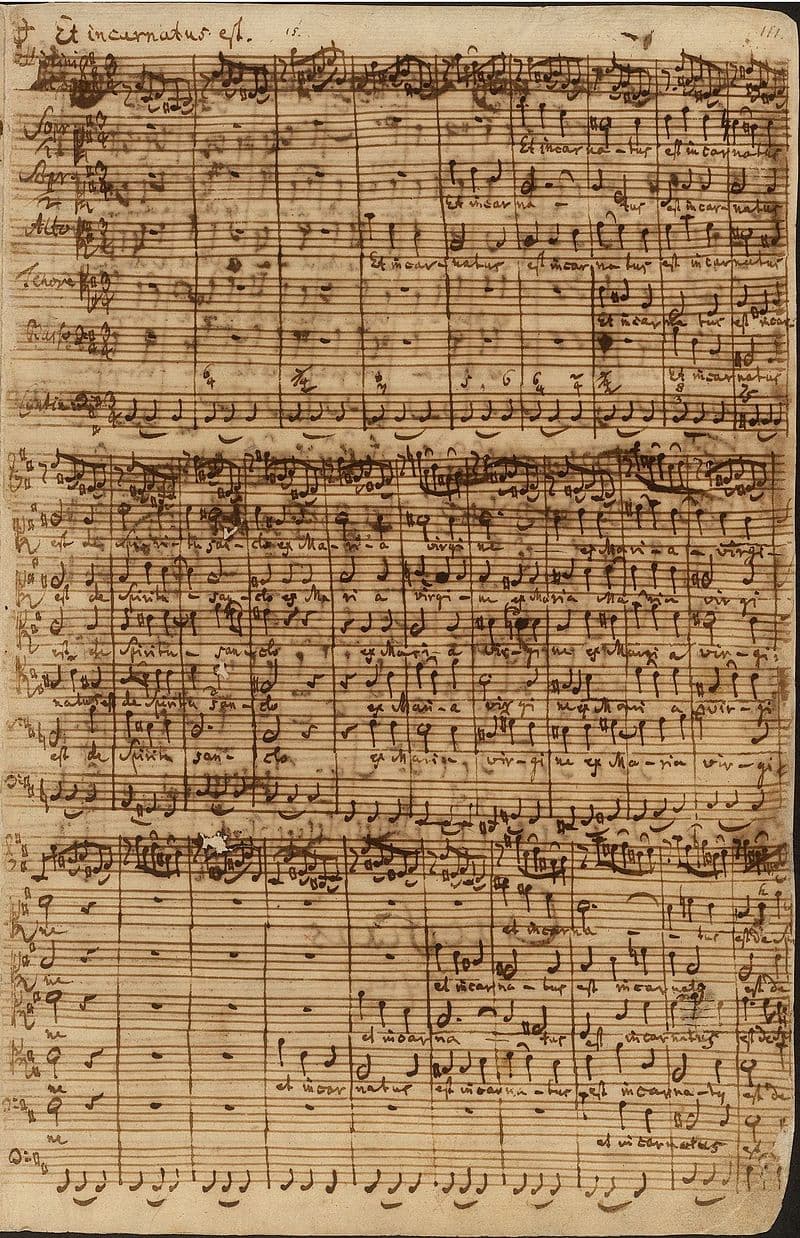
Bach’s B minor Mass, BWV 232
While this kind of assessment might need a bit of clarification, the work is significant because we find a Lutheran composer setting the complete Latin text of the Catholic Mass Ordinary. So, how does a devout Lutheran musically deal with the line in the Creed, “and I believe one holy catholic and apostolic Church?” That particular text receives two melodies sung by the choir simultaneously, and in perfect harmony. One is the traditional melody sung by Roman Catholics, and the other is a Lutheran chorale melody. The language of music, after all, has the distinct ability to console and unite. Let us now join the Bach Collegium Japan in Bach’s short prayer for peace, the “Dona Nobis Pacem” (Grant us Peace) from his B-minor Mass.

